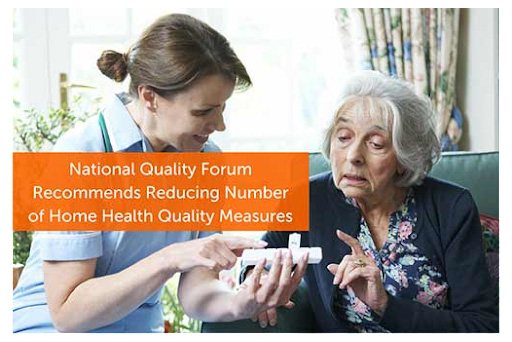One priority for a home health agency is to deliver high-quality care. Not only do quality scores play a role in calculating reimbursements, but they can influence whether patients choose your agency or another one. However, as any agency manager can attest, the process for determining quality is cumbersome — and in many ways, doesn’t always tell the full story about an agency’s ability to deliver great care.
Currently, home health agencies are rated by CMS on 79 different quality measures. However, according to “Maximizing the Value of Measurement: MAP 2017 Guidance” from the National Quality Forum’s (NQF) Measure Applications Partnership (MAP) released in mid-March, 15 of those measures should be removed from the Home Health Quality Reporting Program. Of the 15 measures slated for removal, 14 are due to the potential for the patient’s performance to top out; in other words, they aren’t likely to improve in that area regardless of intervention and/or support.
These measures are:
- Depression assessment conducted
- Stabilization in grooming
- Stabilization in bed transferring
- Stabilization in light meal preparation
- Stabilization in phone use
- Stabilization in management of oral medications
- Stabilization of speech and language
- Stabilization in cognitive functioning
- Stabilization in anxiety level
- Stabilization in toilet transferring
- Stabilization in toileting hygiene
- Diabetic foot care and patient/caregiver education implemented during all episodes of care
- Drug education on high-risk medications provided to patient/caregiver at start of episode
The NQF recommends removing the final measure, increase in pressure ulcers, because it is no longer endorsed by the NQF, and the committee recommended the removal of all measures that do not have that endorsement.
The Motivation for Removal
The primary motivation for reducing the number of quality measures is the simple fact that these particular measures do not add value to the reporting process, while subsequently adding to the burden on caregivers and agencies to gather the data necessary to create an evaluation. In fact, a majority of nurses (75 percent) note that at least a quarter of a typical shift is spent on paperwork, including documentation, completing checklists, and inputting data.
While home health software has eased some of this burden, the issue of utility still remains; in other words, if a patient’s status is not going to change on a particular measure, do we need to record that data? And perhaps more importantly, should an agency’s reimbursement be determined by measures that they have little to no control over? MAP argues that unless a measure can actually drive improvements in care, or it meets the criteria for endorsement by the NQF, then it has no place in the HHQRP.
Improving Future Quality Measures
In a separate report issued back in February, MAP also reviewed quality measures used in the Merit-Based Incentive Payment System and the Medicare Shared Savings program, which changes how doctors are paid by Medicare. The final assessment was that measures for these programs need to be higher-value and focused on outcomes. With this in mind, MAP recommended that of the 74 new quality measures being considered by CMS, 41 needed to be revised or dropped altogether.
MAP used same foundation developed in that earlier report to inform the guidance in the March report. Measures need to be focused on outcomes, especially patient-reported outcomes that will set the stage for better performance. With this in mind, MAP identified the following measures as “high-value”
- Outcomes, including mortality, adverse events, complications, and patient status post-care
- Patient reported outcomes, in which data regarding treatment, function, and health status is provided directly by patients
- Measures related to overall experience, care coordination, quality of life, and population health
- Appropriateness, overuse, efficiency, and cost- of-care measures
- Composite measures
- Process measures with a strong evidence- based link to patient outcomes
MAP believes that implementing such measures will provide a more accurate assessment of the quality of care, while also reducing the burden on providers to collect and record the necessary data.
As of April 2017, the MAP report is only a recommendation, and has not yet been adopted as a rule by CMS. Thus far, CMS has not shown any indication of moving forward with rule making based on these recommendations, but that could change. With so much focus on healthcare improvement and quality, it’s important to carefully consider how every measure effects overall assessments and what will bring the most value.
Currently, MAP comprises more than 150 healthcare leaders from more than 90 organizations from across the healthcare spectrum. The group is working to build stronger relationships with CMS and other agencies to improve the healthcare delivery. To stay abreast of developments in this area, follow the Complia Health blog, and learn more about tools and solutions that can help with your data collection and management.




